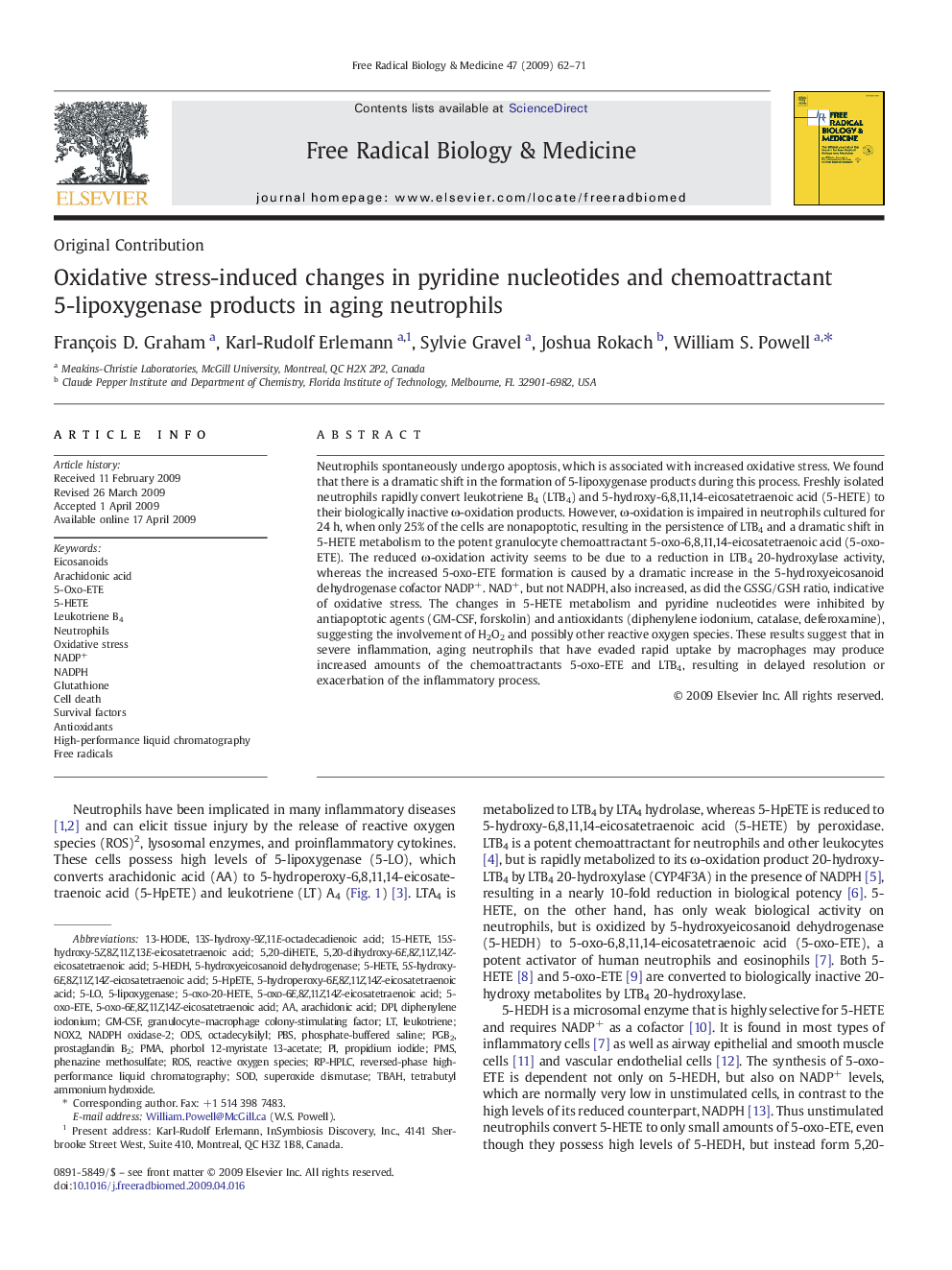| Article ID | Journal | Published Year | Pages | File Type |
|---|---|---|---|---|
| 1910221 | Free Radical Biology and Medicine | 2009 | 10 Pages |
Neutrophils spontaneously undergo apoptosis, which is associated with increased oxidative stress. We found that there is a dramatic shift in the formation of 5-lipoxygenase products during this process. Freshly isolated neutrophils rapidly convert leukotriene B4 (LTB4) and 5-hydroxy-6,8,11,14-eicosatetraenoic acid (5-HETE) to their biologically inactive ω-oxidation products. However, ω-oxidation is impaired in neutrophils cultured for 24 h, when only 25% of the cells are nonapoptotic, resulting in the persistence of LTB4 and a dramatic shift in 5-HETE metabolism to the potent granulocyte chemoattractant 5-oxo-6,8,11,14-eicosatetraenoic acid (5-oxo-ETE). The reduced ω-oxidation activity seems to be due to a reduction in LTB4 20-hydroxylase activity, whereas the increased 5-oxo-ETE formation is caused by a dramatic increase in the 5-hydroxyeicosanoid dehydrogenase cofactor NADP+. NAD+, but not NADPH, also increased, as did the GSSG/GSH ratio, indicative of oxidative stress. The changes in 5-HETE metabolism and pyridine nucleotides were inhibited by antiapoptotic agents (GM-CSF, forskolin) and antioxidants (diphenylene iodonium, catalase, deferoxamine), suggesting the involvement of H2O2 and possibly other reactive oxygen species. These results suggest that in severe inflammation, aging neutrophils that have evaded rapid uptake by macrophages may produce increased amounts of the chemoattractants 5-oxo-ETE and LTB4, resulting in delayed resolution or exacerbation of the inflammatory process.
